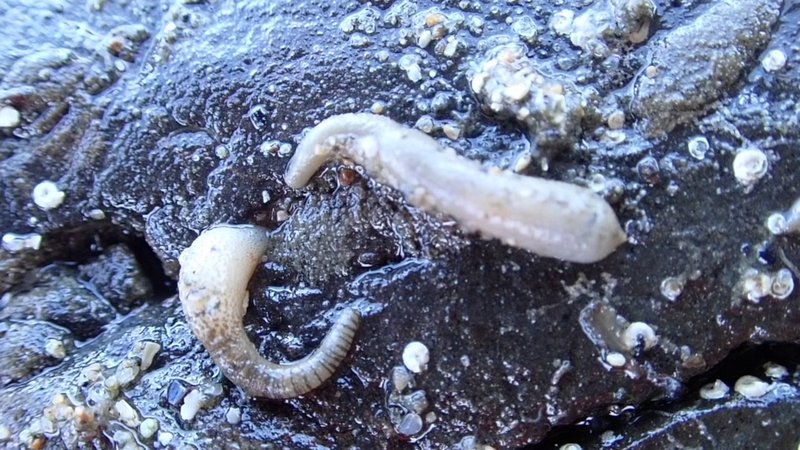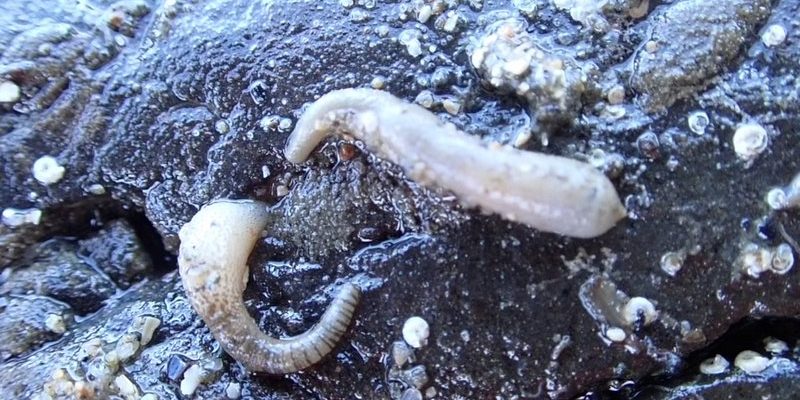
Now, you might be wondering, what exactly is a peanut worm? Also known scientifically as *Sipunculus nudus*, these fascinating marine worms are often found in sandy or muddy seabeds. They’re not only essential for their habitats but also provide insights into environmental health. In various field studies, researchers have observed how peanut worms respond to seasonal changes, shedding light on their life cycles, feeding habits, and reproduction. Let’s dive into the intriguing world of peanut worms and how their behavior shifts with the seasons.
What are Peanut Worms?
Peanut worms are soft-bodied, marine invertebrates that belong to the phylum Sipuncula. Unlike earthworms, these creatures have a distinct shape—think of a peanut, hence the name! They can grow anywhere from a few centimeters to over 20 centimeters long. Peanut worms are primarily found in shallow coastal waters and can adapt to different environments, from sandy to muddy areas.
These worms possess a unique ability to retract their body into their protective, bulbous trunk when threatened, making them look like a peanut sitting snug in its shell. They feed on detritus and microscopic organisms in the sediment, playing a significant role in nutrient recycling. Given their position in the food web, understanding their behaviors can help us assess the overall health of marine ecosystems.
Understanding Seasonal Changes
Just like how leaves change color in the fall, peanut worms exhibit distinct seasonal behaviors. These changes are often influenced by variations in temperature, food availability, and reproductive cycles. Throughout the year, peanut worms may shift their feeding habits, depth preferences, and even their physical activity levels.
For instance, during warmer months when food is abundant, peanut worms are more active and can be found deeper within the substrate. In contrast, colder months might lead them to retreat and reduce their metabolism. Observing these patterns helps researchers understand how peanut worms cope with environmental changes and can provide insight into broader ecological shifts.
Feeding Habits Throughout the Seasons
Peanut worms are known for their opportunistic feeding habits. They primarily feed on organic matter found in the sediment, but their feeding isn’t constant throughout the year. During the spring and summer months, when nutrients are plentiful, these worms are more active. They extend their feeding structures and filter feed on microorganisms and detritus.
In the fall and winter, however, food becomes scarcer. Peanut worms often enter a state of dormancy, significantly slowing down their feeding rates. Think of it as a survival strategy. When resources dwindle, they conserve energy, much like how we might hunker down at home when we’re low on groceries. This adaptability showcases their resilience in facing seasonal challenges.
Reproductive Patterns and Timing
Reproduction is another crucial aspect that varies with the seasons for peanut worms. These creatures typically breed during warmer months when conditions are most favorable. During this time, their populations can experience significant growth. Female peanut worms release eggs into the water, which, if fertilized, can lead to the development of larvae.
In cooler months, reproduction slows significantly, with fewer young worms making it to maturity. This timing is likely linked to the availability of food and suitable environments for the larvae to develop. Observing these reproductive patterns not only helps us understand peanut worm populations but also highlights the interconnectedness of marine life and their environments.
Environmental Impacts on Behavior
Environmental changes, including pollution and climate fluctuations, can significantly impact peanut worms and their seasonal behavior. For example, higher water temperatures caused by climate change can lead to shifts in their feeding and reproductive cycles. When the environment becomes stressful, such as during pollution spikes, peanut worms may struggle to thrive.
Field studies have shown that peanut worms can serve as bioindicators, meaning that their health reflects the overall health of their ecosystems. If peanut worms begin to decline in numbers or change their behavior drastically, it can signal larger environmental issues. Understanding these impacts can help guide conservation efforts and ensure the health of our precious marine environments.
Field Studies and Research Methods
Research on peanut worms and their seasonal behavior employs various field study methods. Scientists often collect samples at different times of the year to analyze their populations, feeding habits, and reproductive cycles. Techniques such as sediment core sampling allow researchers to observe how peanut worms interact with their environments over time.
By tracking these patterns, researchers can assess how peanut worms respond to environmental changes and stressors. This data is crucial not only for understanding peanut worms but also for the larger marine ecosystem. The findings from these studies can help tackle challenges like habitat degradation and climate change effects on marine life.
Understanding the seasonal behavior patterns of peanut worms is vital for several reasons. Not only do they play a critical role in nutrient cycling within their ecosystems, but they also provide insights into the health of marine environments. As seasons change, so do these fascinating creatures, adapting to their surroundings in remarkable ways.
By studying peanut worms, we gain a better understanding of how environmental factors influence marine life. This knowledge can help inform conservation efforts and enhance our appreciation for the intricate relationships within nature. So, next time you think about the ocean, remember the peanut worm and its dance through the seasons—an essential part of the underwater world that deserves our attention and protection.

